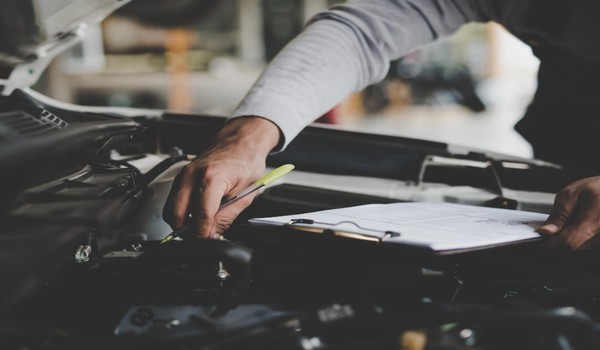There are 10-points to our Comprehensive Brake Check.
BRAKE SPECIALS FOR MAY AND JUNE ON NOW
Your brakes feel “off.” So, you do a quick online search for “brake check” and end up at your local Midas Service Centre. Smart move. The technician takes your car into the service bay while you enjoy some coffee.
What happens next? Get the full rundown on what is included in a brake check, what our techs look for, and what they do.
From start to finish, our technicians meticulously examine every aspect of your vehicle’s braking system.
- Brake Rotors
- Brake Pads
- Brake Fluid
- Brake Hose
- Brake Calipers
- Brake Shoes
- Brake Drums
- Brake Pedal
- Brake Sensors
- Wheel Cylinders
-
Visual Inspection
A technician will pop the car's hood for a visual inspection of the engine area. They’ll take a look at your vehicle’s master cylinder, power booster, brake lines, vacuum hose, and combination valve. In particular, the technician will look for signs of damage or leaking fluids.
Brake Fluid Check
Next, comes a strip dip brake fluid test. A technician will lower a test strip into your brake fluid to diagnose its condition. A brake fluid test ensures that your vehicle’s brake fluid is in good shape and uncontaminated by other substances, and that the fluid level isn't too low.
Undercarriage Inspection
After the under-the-hood check is complete, your vehicle is raised on a lift. The technician inspects the undercarriage for physical damage, wear, and leaks. They also check the front brake hoses, mounting brackets, and wheel cylinders for damage or rust. Any abnormalities are documented along the way.
Wheel Component Check
Up next is a wheel inspection. Your vehicle remains on the lift but is lowered a bit so the technician can check wheel bearings for excessive movement and other such hazards. The technician will then remove your vehicle’s wheels to inspect the hub and nut holes for unsafe wear or damage.
Additionally, they will carefully check both caliper assemblies for a variety of issues, like rusted caliper slides and signs of leaking fluid. Brake rotors are carefully measured and checked for physical damage.
The calipers engage your brake pads. Your brake pads apply pressure to the rotor, which directly connects to each wheel. This pressure creates the friction needed to slow or stop your vehicle. When the rotor slows, so do your wheels.
Braking Component Assessment
Then, technicians will remove your vehicle’s rear brake drums to inspect them for a variety of different problems, including cracks and hard spots. They’ll compare all findings to the manufacturer’s specifications.
The brake check concludes with a variety of detailed inspections. Wheel cylinders, pins, springs, washers, pads, the backing plate, and primary and secondary brake shoes are all inspected for damage, distortion, or abnormal wear and tear.

